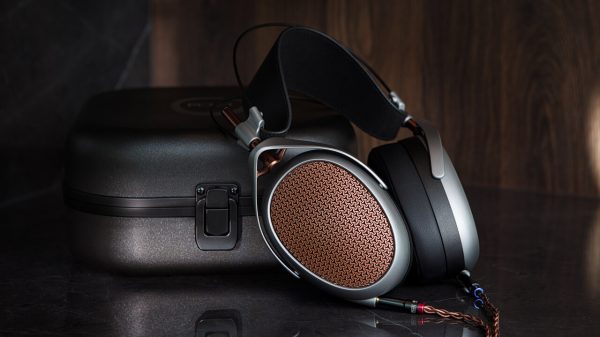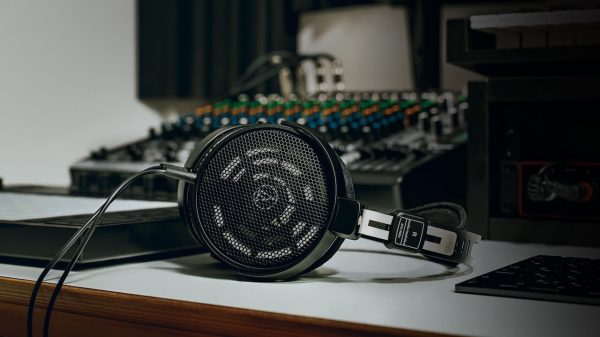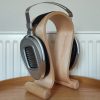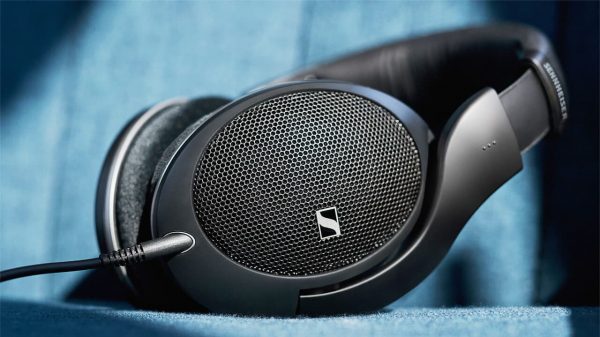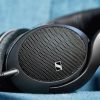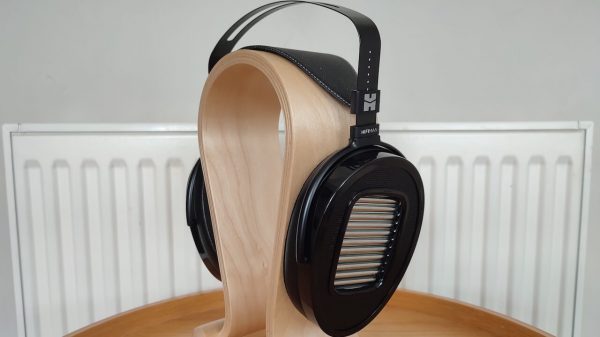Do you know which high-end audio brand released the most consistent stream of excellent and affordable products in 2022? If your answer isn’t Monoprice — you need to stop reading Stereophile and TAS.
Monoprice has invested a lot of time and money in its Monolith series products that offer a little bit of everything for music listeners and home theater enthusiasts. Products such as the Monoprice Monolith M1070 Planar Headphones might be one of the best kept secrets in that extensive product lineup.
The range of products includes loudspeakers, subwoofers, turntables, power amplifiers, and headphones. We recently reviewed the M1570 headphones that Monoprice introduced to compete with some of the more affordable offerings from Audeze and HiFiMAN.
It’s become a familiar story that most of the Monolith series products offer a lot of performance for prices that are super competitive; which is not to say that they are perfect because almost all of them have some rather obvious shortcomings. You can’t expect perfection in specific price categories but you always do rather well with their components.
The high-end headphone category is a perfect example; the Monoprice M1570 Planar Magnetic Open-back Headphones retail for $599 and that places them in the lion’s cage with some formidable products like the Audeze LCD-2, HiFiMAN Sundara, and Edition XS Headphones.

The model being reviewed today is the M1070 Open-back Planar ($399) which sits in the middle of the Monolith lineup between the flagship M1570 ($599) and the M570 ($179).
The Monoprice M1070 is the latest update to the model that launched the Monolith line of planar headphones and looks and feels like an updated version of the M1060.
The open-back design utilizes a 106mm planar magnetic driver and offer a very similar 60 ohms impedance and sensitivity rating of 96 dB/mW.

Full Specs
| Model | 39414 |
| Style | Open Back |
| Transducer Type | Planar Magnetic |
| Magnetic Structure | Linear Symmetry Magnets |
| Magnet Type | Symmetric Push‑Pull Neodymium |
| Driver Size | 106mm |
| Maximum Power Handling | 5W |
| Maximum SPL | >130dB |
| Frequency Response | 5Hz ~ 50kHz |
| Total Harmonic Distortion | Less than 0.1% at @100dB |
| Impedance | 60 ohms |
| Efficiency | 96dB / 1mW |
| Optimal Power Requirement | 200mW ‑ 4W |
| Weight | 20.5 oz. (580g) |

Technology
Monoprice sells a lot of cables, adapters, and audio accessories so it would almost be weird if they didn’t offer a great kit with each of their headphone models; the M1070 don’t break with tradition and come packaged with the headphones, carrying case, cable, two sets of ear pads, and a 6.35mm adapter for the cable.
The supplied 6-foot headphone cable is rather long and built from a very heavy gauge making it rather clear that these headphones are aimed at the desktop and home listener. The carrying case is rather large and not ideal for a commuter who might want to schlep them in a laptop bag.
The two sets of supplied ear pads offer a very different look, feel, and impact on the sound; the factory installed set are memory foam lambskin pads that add 1-inch of depth between the driver and your ear.
The second pair are manufactured out of velour and are much thinner and proved to be much cooler on the head during long listening sessions. We also felt that the overall sonic presentation was more balanced with the thinner pads.
There has been some online criticism of the the operation of the ear pads and how difficult it is to take them on/off. In our experience, the system is rather straight forward once you understand how it operates.
The pads have a lip that is similar to those found on Beyerdynamic headphones, and a groove that the lips fits inside. To remove them, pulling one side slightly outward should free enough of the lip for easy removal.
To reinstall though, is a bit tricky as the groove the lip has to fit inside is rather narrow. Looking at the groove, you will find a notch at the 11 o’clock position on the frame.
To install the pads, use the notch to guide the lip into the groove and rotate the pad around the frame until 90% of the lip is inserted into the notch.
For the remaining 10%, you do have to do a bit of wrangling to get the lip over the edge of the notch and into the groove but even this can be accomplished quickly after a few attempts.
One significant change from the M1060 are the new ear cups. The original had some issues with the wood cups cracking and Monoprice have decided to forgo the wood cups for the sake of durability.


The headband and frame are metal with the headband being wrapped in memory foam and vegetable leather. The headband is rather obviously a borrowed design as it bears a very close resemblance to Focal’s headband design; it is a bit wider and utilizes a slightly lower quality metal.
The gimbals are fairly thin sheet metal which is both a good thing for adjusting the clamping force (and unless you have a large head you’ll likely need to tighten them) and a bad thing as it bends fairly easily so you may have to make the adjustment more than once.
Using stronger metal would likely improve long term durability as repeated bending cannot be good for it.
I do like the design of the connectors with its 45° forward angle and 3.5mm jacks again improving the durability. The cloth wrapped cable is also well made albeit on the heavier side.
The weight remains about the same as the previous generation which is probably not a good thing; the headband is well-padded but at close to 600 grams — these are a rather heavy headphone and you will notice it after a couple of hours of listening.

The aforementioned ear pads will not become an issue if you follow my advice after unboxing them; the M1070 ships with the leather/memory foam pads installed and to my ear, this is a mistake.
The sound is distant and a bit muffled with the leather pads and the true capabilities of the M1070 can be better heard with the velour pads in place so my advice is when unboxing the M1070, trade the pads for the velour and don’t look back.

Sound
Those looking for very deep sub-bass impact and definition will appreciate the leather pads, but there is no question that the velour pads will deliver better control and much tighter sounding bass response.
The bass range is quite good overall with no discernable roll-off until well down into the 20Hz range and enough texture to keep things interesting even at that part of the frequency range.
The mid bass has rather solid impact with the velour pads and the trade-off using the leather pads is a loss of clarity, definition, and detail — not a trade-off that we advise you to make.
In some respects, the Monoprice M1070 deliver bass performance that is similar to the Audeze LCD-2 or LCD-X from the perspective that it can be very impactful and rather well controlled and detailed.
The mid-bass and upper bass tuning contribute to the warm tonal balance overall; which is a big change from the M1060 that were leaner and cooler sounding overall.
The midrange is clean sounding overall but there is a bit of a lift that does push vocals forward in the mix and creates a more intimate presentation compared to its predecessor.
The extra degree of midrange emphasis infuses lower strings with more body and texture making it a rather surprising headphone with classical string quartets.

Rock listeners will be impressed with the how guitar notes have a rather strong growl and enough edge to sound quite realistic.
Male and female vocals have good texture and body; female vocals are pushed further forward in the mix than their male counterparts.
The treble is the most polarizing feature of the M1070. Gone is the lower/mid treble emphasis of the M1060, replaced with more of an emphasis in the higher treble range.
Monoprice has removed the 5kHz spike that was present in the M1060, which gives the M1070 a darker sounding top end but restrains the treble enough that nobody could find it overly bright sounding.
However, there is somewhat of a lift in the upper treble that can be somewhat fatiguing and does smear detail in that region; the end result is that the lift creates a situation in the upper treble where vocals and instruments lack proper separation Snare rattle is good as it doesn’t rely on that upper range but cymbals are a bit metallic sounding with very little sense of airiness.
The soundstage is fairly intimate sounding and while it has decent proportions, none of the dimensions are particularly large and it gives the impression that most of the music is in your head rather than around it.
Instrument separation is good, but also somewhat inhibited by the lift in the upper treble. Imaging is rather good with movements across the soundstage easily tracked and musicians are well defined in their respective spots.

Conclusion
At its price point, the Monoprice M1070 faces some stiff competition from the HiFiMAN Sundara; there are enough differences between them that they will find their respective audiences, but the chances are rather low that most people will like both of them equally.
The M1070 hits harder in the low end and can deliver more impact than the Sundara; it also is warmer in the vocals and a bit more forward sounding which helps both choral music and strings.
I find the M1070 a more engaging listen for orchestral pieces as well.
The Sundara is more about technical performance and is more detailed, cooler in the midrange and brighter in the treble which gives it more air at the top end and a larger soundstage compared to the M1070.
From an engagement perspective, the M1070 is more intimate and impactful and the performance feels more like you are on the stage; the Sundara sounds like you are listening from 10 to 15 rows back in the hall.
The Monoprice M1070 might not have the technical perfection of the best planar models in the price range, but it’s a very enjoyable listen that really keeps your attention with a much wider range of music.
2023 is off to a great start for Monoprice with these surprisingly adept and affordable headphones.
Where to buy: $399 at monoprice.com | $279 at Amazon














